Contents
There is a freshness zone in the latest generation refrigerators, although they began to introduce it a long time ago. From our review, you will find out how refrigerators with a freshness zone differ from models without it. We will tell you what it is, how the technology works and where you can find it.
Why you need a freshness zone
Traditionally, the refrigerator is usually divided into two compartments: for cooling and freezing. In the main compartment we put products that are immediately sent to the table or to the pan, and in the freezer, products are stored for a long time and require defrosting after removal.
But there are such groups of products for which none of the chambers is suitable, they must be stored at a temperature of -1 to +3 degrees. Cheeses, fruits, meat or fish are destroyed when frozen, as water freezes in them, and in heat they quickly deteriorate. The ideal place is just the “zero zone”, in which the temperature is kept close to zero. Even in it, more slowly than in other sections, pathogenic microbes multiply.
If you have a Biofresh drawer, put food in it that needs to stay fresh longer. The temperature of the main compartment is usually around +4-8 degrees – store in it only those products that you plan to consume in the coming days.
Whose merit
A separate shelf with the name Biofresh was invented in the mid-90s by designers (Libherr). They stated that this is the best solution for storing fish and meat without freezing and thawing, while maintaining taste and benefits for the body. Later, other brands began to implement the development, such as LG, Samsung, etc.
What other names are
The name of the compartment can vary significantly depending on the brand. If you ask a consultant when buying a refrigerator if it has Biofresh, he may say that there is no such option. Just the name of a similar function will be different.
It is not for nothing that manufacturers call their developments differently, as they use various unique technologies. So, you can meet:
- Biofresh — by Liebherr;
- Fresh Zone, Opti-Temp Zone, Miracle Zone, Fresh Converter (for meat and vegetables), Fresh Balancer or Opti Fresh Zone on LG and AEG;
- Fresh Box – in Hotpoint-Ariston;
- Natura Fresh – in “Electrolux”;
- Flex Cool – in “Indesit”;
- Vita Fresh – in “Siemens” and “Bosch”;
- Zero’N’Fresh — in Gorenje;
- Cool Select Zone – in Samsung and others.
The technical specifications indicate the presence or absence of a “freshness zone” or “freshness box”, so you can’t go wrong. But keep in mind that up to 20% of refrigerators do not provide such a shelf. You will also not find a zero shelf in Russian or Belarusian appliances (Atlant, Stinol), as well as in budget imported models.
Where is
The real freshness preservation zone is a compartment in which an independent cooling system is organized. In cheap models, its function is performed by a box that is located inside the camera. It is usually located near the freezer compartment or evaporator. It is not a fact that there will be zero temperature here – most often this is a box in which the temperature is slightly lower than in the entire chamber. It can go beyond the range from -1 to +3 degrees; if it is important for you to know this, measure the values yourself with a household thermometer.
Fact! In units from Siemens, Electrolux and Zanussi, the zero compartment is located between the main compartments.
In some devices, this place does not depend on any of the compartments – it is located between them and is equipped with its own door. A two-chamber refrigerator can be equipped with a freshness zone in the main chamber at the border with the freezer. So, the designers of Bosch and Liebherr have created refrigerators in which you can switch the entire compartment to the “0 degrees” operating mode.
How does work
In the Economy class models, the zero compartment is designed as a separate box – the products are cooled in it solely due to the proximity of the box to the zone with low temperatures, so no additional parts are used to adjust the temperature in the compartment. These budget technologies are most often found in the Indesit technique. In Siemens, the compartment is cooled due to the flow of cooled air streams coming from the freezer – for this, the manufacturers laid a separate channel into the “fresh” zone.
Engineers from AEG, Gaggenau, Siemens, Liebherr have created a more complex technology. The freshness zone has its own evaporator and does not depend on the cooling systems of the other chambers. It sometimes has a built-in fan that distributes air flows. Also, the “zero” compartment in the technique of these brands is often adjustable, since the design has a temperature sensor. It monitors and controls the evaporator to keep temperatures within limits. In LG devices with Miracle Zone, you can control the temperature marks from the remote control.

Types
Products require different storage conditions. Greens, vegetables and fruits require high humidity, and meat or fish should be kept absolutely dry.
If there is only one shelf with low temperatures, it is dry. It maintains a negative temperature, and humidity reaches 55%. What is stored in such conditions? Up to a week you can store fish and meat in a package, up to two weeks you can store ham. Cheese will be stored here even longer without loss of appearance and taste.
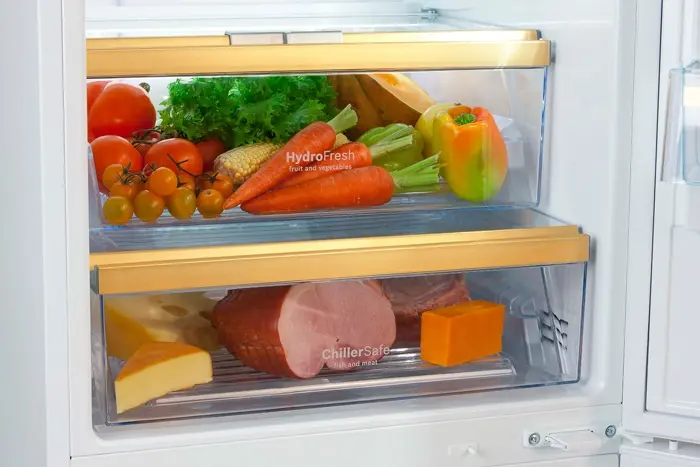
In modern technology, you can find a second zone of freshness with high humidity. The “wet” zone operates at a temperature slightly above zero with air humidity up to 90-95%. In such conditions, greens, fruits and berries are perfectly stored. Apples and pears lie without problems for several months and do not lose their smell, color and taste. Tomatoes will be stored for up to 10 days, and greens will retain an attractive appearance for a couple of weeks.
Important! In modern devices, zones can be divided into several compartments with different indicators of temperature and air humidity.
If your Samsung refrigerator (or another brand) has two “fresh” zones, and such compartments are located independently of the main or freezer, have their own lid – one will be wet, the second dry. To verify this, check the information in the data sheet.
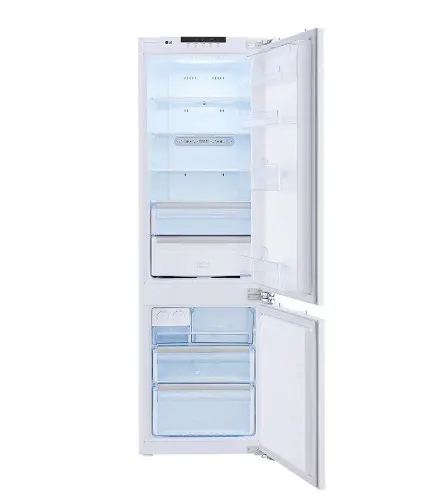
Sometimes there are three such compartments:
- For storage of meat, fish and cheese products – with low humidity;
- Under vegetable food, which will be eaten soon – with high humidity;
- For long-term storage of vegetables and fruits – with high humidity and zero temperature.
Disadvantages
As such, this design feature does not have any disadvantages, and it cannot be said that a refrigerator without a freshness zone is somehow better. They’re just made for different needs.
For those users who store practically only semi-finished products on the shelves or are used to consuming products within a couple of days from the date of purchase, this technology will not be fundamentally important. When choosing a technique, you can not focus on it. But if you buy a refrigerator without a freezer, just a fresh zone can compensate for its absence.
The subjective disadvantages include the high price for equipment with additional technologies. Particularly expensive are those options in which the zero compartment is powered by its own cooling system and does not depend on the main ones. Sometimes the markup can be up to a quarter of the total cost of the device. If the equipment is from a low price category, the presence of a zero shelf will most likely not affect the cost. As we found out above, often the temperature and humidity indicators are close to the real Fresh Zone of famous brands.
Fact! The difference between models equipped with a “zero zone” is that often there are no cells or shelves in the door opposite this compartment. They just don’t fit in there.
Also, users who have a dry type of freshness zone in their refrigerators report in reviews that food sometimes freezes. In fact, this does not affect the quality of meat or fish. Choose reliable packaging so that the ice crust appears on it, and not on food.
Overview of refrigerators with a freshness zone
We present you a small rating of units equipped with a “zero” compartment. It includes both built-in and free-standing models, as well as models with two chambers and three-chamber (side by side).
LG GR-N309 LLB
This model is built-in type, the freezer is located at the bottom. An electronic control system is provided. Energy efficiency class – A (330 kW per year). The design has one motor-compressor. The type of refrigerant used is R600a. Only 2 compartments and 2 doors. Case dimensions: 55,4×54,4×177,5 cm.
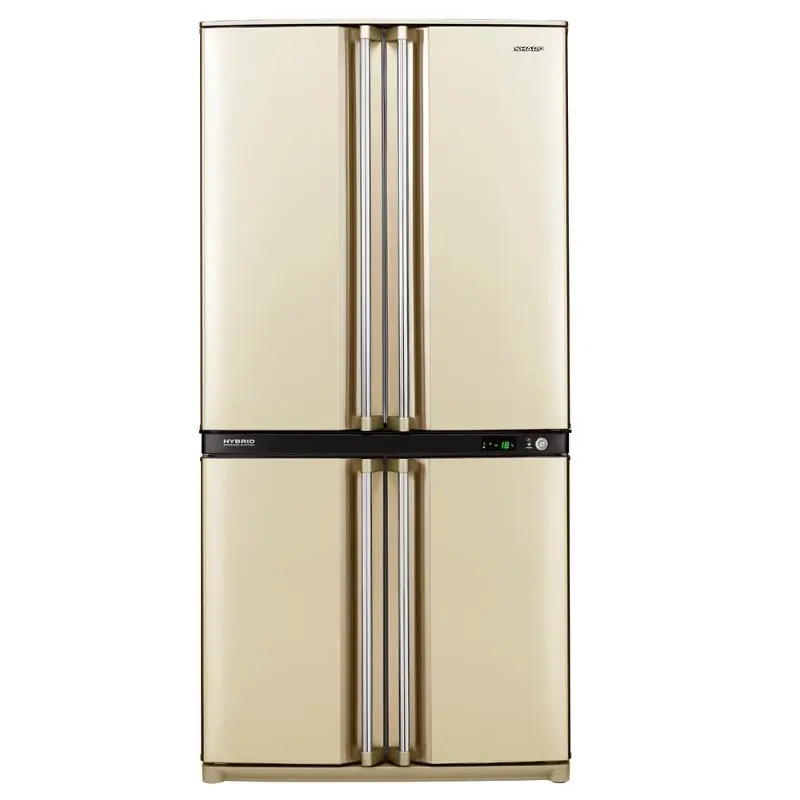
Features:
- The presence of a zone of freshness.
- No Frost is provided in both compartments.
- Autonomous preservation of cold during a power outage for 12 hours.
- Freezing capacity – up to 10 kg of products per day.
- Additional functions: super-cooling and super-freezing.
- There are temperature indicators.
Specifications:
- The total volume is 245 liters.
- The volume of the main compartment is 181 liters.
- The volume of the freezer is 64 liters.
Also, the appliance is equipped with an ice generator. The shelves are made of durable glass. The door can be moved to the other side. Reduced noise – up to 37 dB. Weight – 73 kg.
The cost, according to YandexMarket (October 2017), is 54 rubles.
Sharp SJ-F95STBE
Equipped with three chambers and has a lower location of the freezer compartment. Electronic control. There is only one compressor. Doors – 4 pcs. The body dimensions in width, depth and height, respectively, are 89×78,7×183 cm. The energy efficiency class is A (573 kW per year).
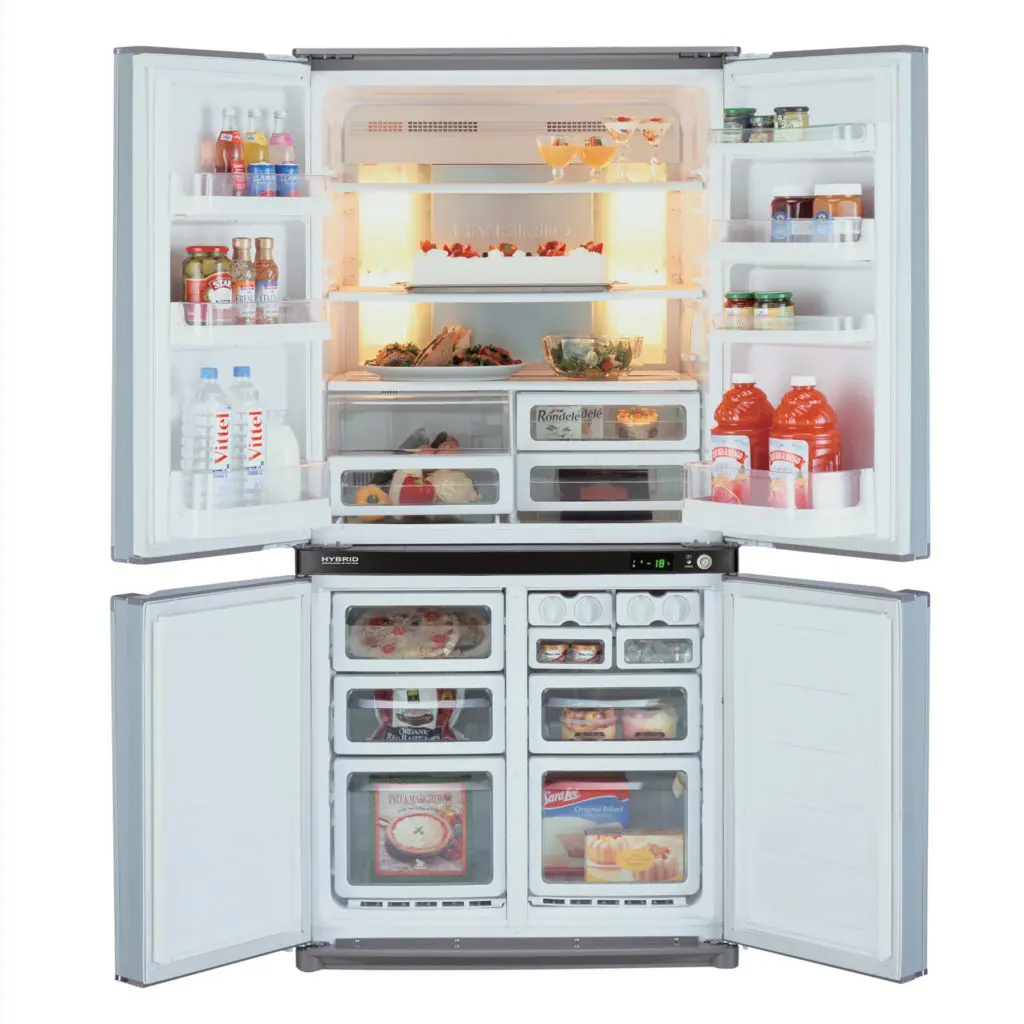
There are two zones of freshness: both dry and wet. Also in each department there is a “No Frost”. The possibility of autonomous storage of heat up to 17 hours is implemented. There is a vacation mode.
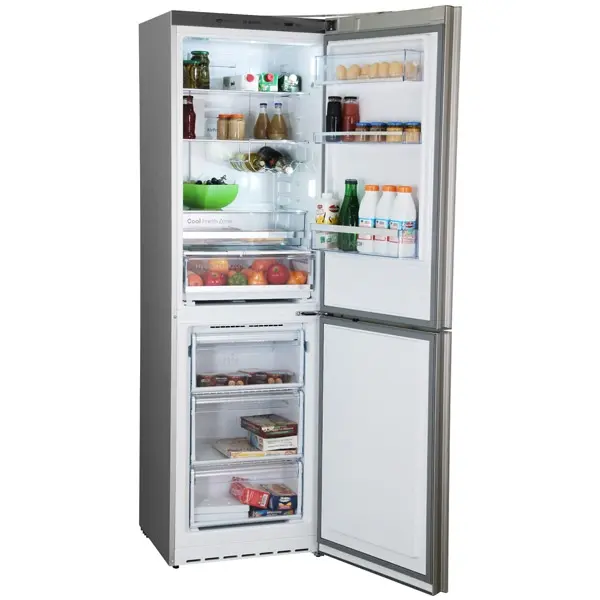
Important! In Holiday mode, you can switch the operation of the main camera to power-saving mode.
You can freeze up to 9,5 kg of food per day. There is a sound signal of an open door. The equipment is equipped with a cold accumulator. Temperature indicators are provided on the panel.
Volumes:
- Freezers — 211 liters;
- Main compartment – 394 liters;
- General – 605 liters.
The shelves are made of glass. Noise – 37 dB. Climate class – SN, T (more on how what does climate class mean and why is it important, read in a separate review). The weight of the appliance is 107 kg.
The price is 89 rubles.
Bosch KGN39SW10
Stand-alone with two chambers and one motor. The location of the freezer is at the bottom. Energy efficiency class – A, electronic control type. Dimensions are 60x64x200 cm (WxDxH).
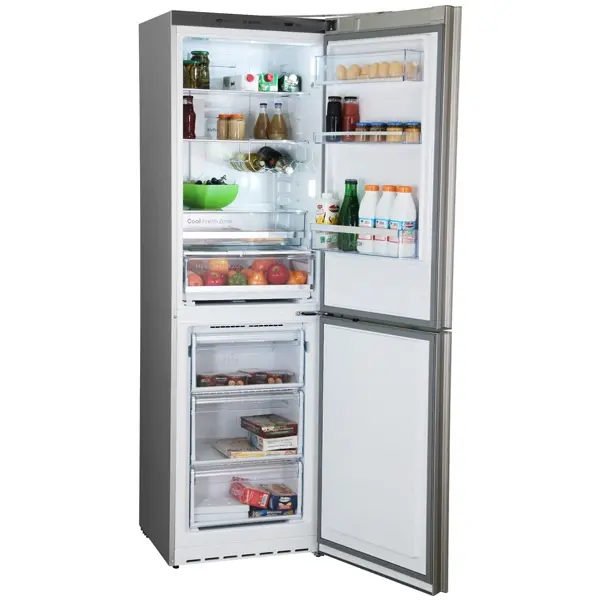
Freshness zones – 2 pieces: dry and wet. Both compartments have No Frost. Offline storage – up to 18 hours. There is a vacation mode. Freezing capacity – up to 14 kg per day. When the temperature rises, the lights on the control panel come on, and when the door is open, an audible alert. Additionally, there are super-cooling and freezing modes. The volume of the freezer is 94 liters, the main compartment is 221 liters, the total volume is 315 liters.
The equipment is equipped with a display, glass doors and shelves. Door hinge – from any side. Noise – up to 42 dB.
The cost is from 55 rubles.
Now you know where the fresh zone is located, why it is needed, what to store in it and what it can be called, depending on the brand. It remains to make the right choice and buy the best refrigerator with a full range of necessary functions.









